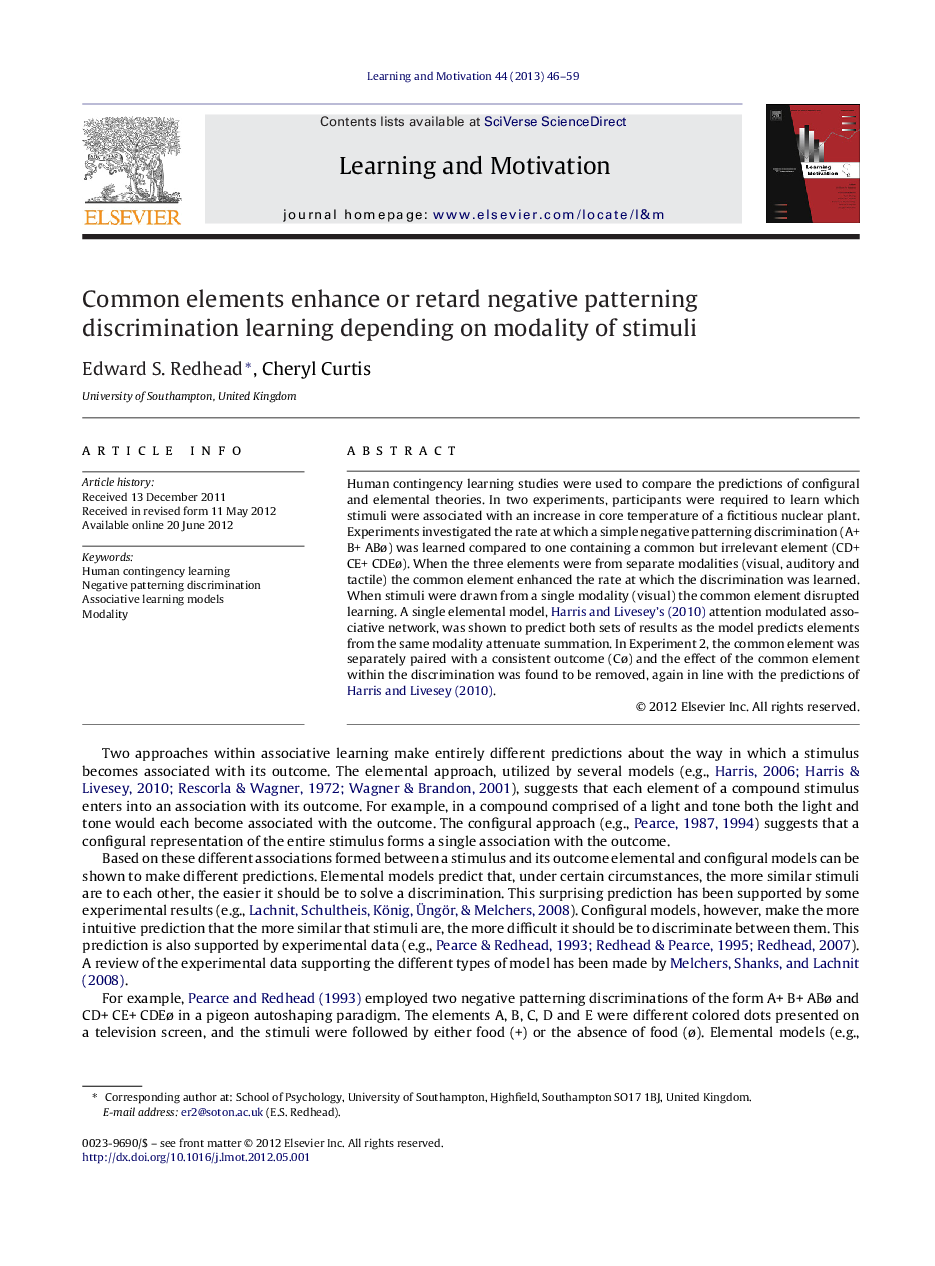| کد مقاله | کد نشریه | سال انتشار | مقاله انگلیسی | نسخه تمام متن |
|---|---|---|---|---|
| 918927 | 919856 | 2013 | 14 صفحه PDF | دانلود رایگان |

Human contingency learning studies were used to compare the predictions of configural and elemental theories. In two experiments, participants were required to learn which stimuli were associated with an increase in core temperature of a fictitious nuclear plant. Experiments investigated the rate at which a simple negative patterning discrimination (A+ B+ ABø) was learned compared to one containing a common but irrelevant element (CD+ CE+ CDEø). When the three elements were from separate modalities (visual, auditory and tactile) the common element enhanced the rate at which the discrimination was learned. When stimuli were drawn from a single modality (visual) the common element disrupted learning. A single elemental model, Harris and Livesey's (2010) attention modulated associative network, was shown to predict both sets of results as the model predicts elements from the same modality attenuate summation. In Experiment 2, the common element was separately paired with a consistent outcome (Cø) and the effect of the common element within the discrimination was found to be removed, again in line with the predictions of Harris and Livesey (2010).
► Tested discrimination rates for stimuli with and without common elements.
► Results from stimuli from different modalities fit elemental model.
► Results from stimuli from the same modality fit configural models.
► Predictions from Harris and Livesey (2010) model match all results.
Journal: Learning and Motivation - Volume 44, Issue 1, February 2013, Pages 46–59